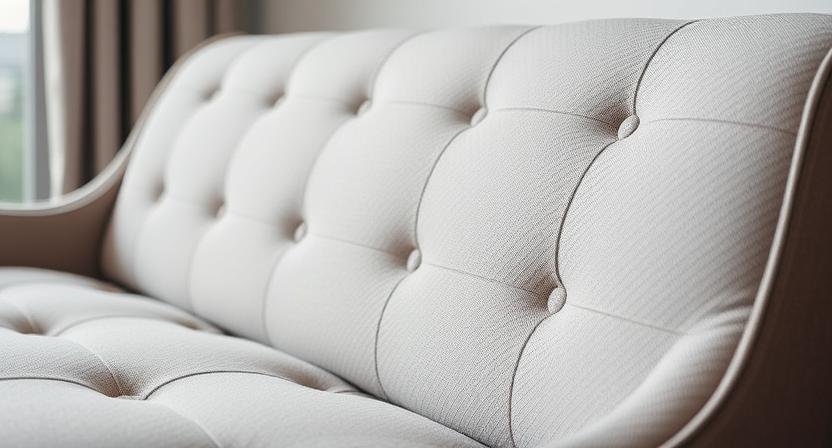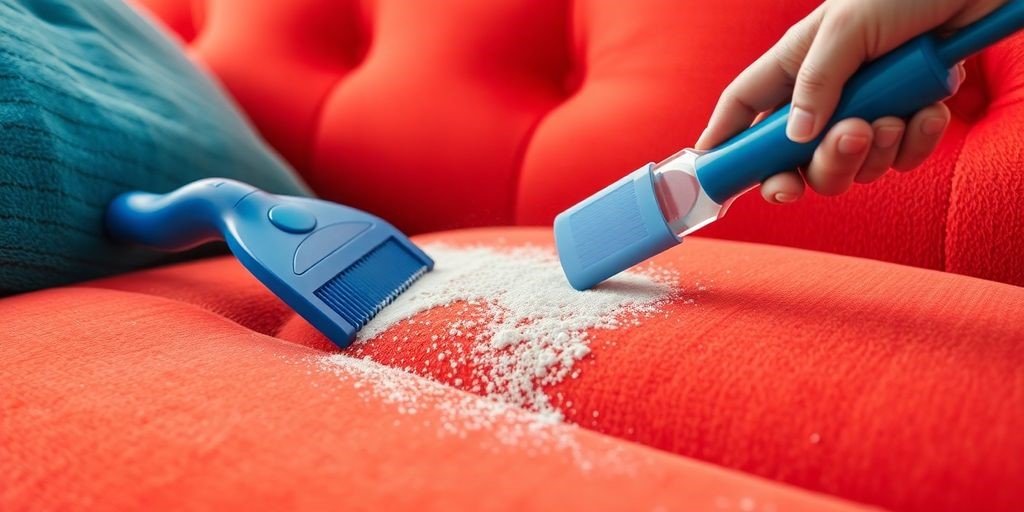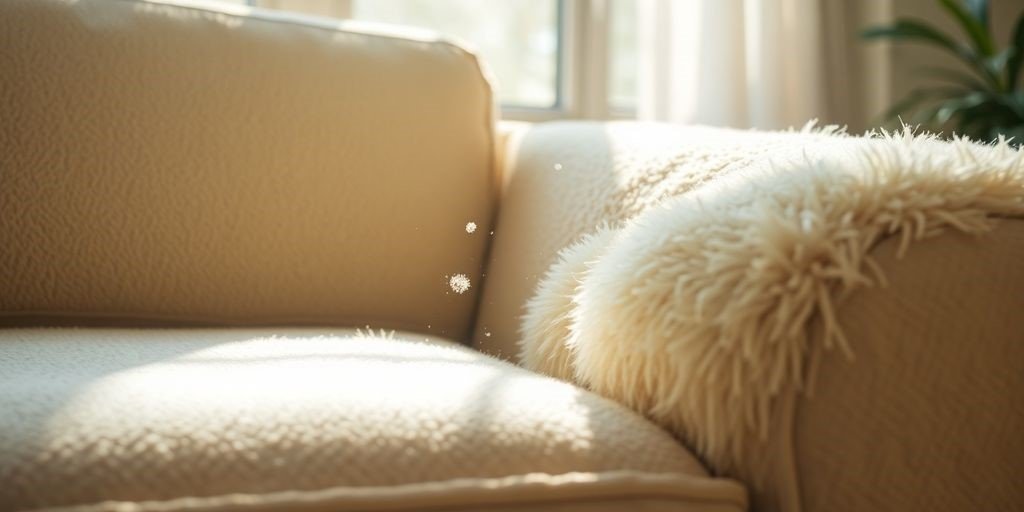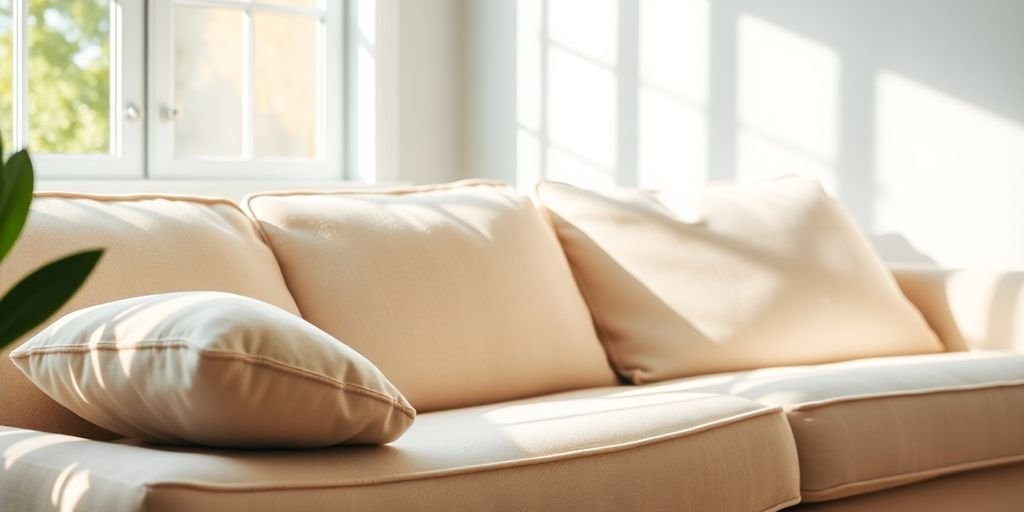Ever think about what’s really living in your couch? It’s easy to forget, but our furniture fabrics soak up a lot more than just crumbs. Dust, pet dander, pollen, and even tiny mold spores can get trapped deep in the fibers.
This stuff doesn’t just make your furniture look dingy; it can really mess with the air you breathe at home. That’s where keeping things clean, especially with professional help, makes a big difference for your health and comfort.
Key Takeaways
- Upholstery acts like a magnet for dust, allergens, and other particles that can make indoor air quality poor.
- Regular cleaning, especially professional services, removes these trapped pollutants like dust mites and pet dander, which helps reduce allergy and asthma symptoms.
- Beyond allergens, upholstery can also harbor mold spores and VOCs from household products, impacting respiratory health.
- Clean upholstery contributes to better airflow within your home and reduces the strain on your HVAC system.
- Professional Upholstery Cleaning Denver services offer a thorough solution to remove hidden contaminants, improving your home’s air and extending furniture life.
The Hidden Dangers Lurking in Your Upholstery

Think about your sofa or your favorite armchair. They look comfy, right? But what if I told you they might be hiding some not-so-great stuff? It’s true. Over time, the fabrics on our furniture act like magnets for all sorts of tiny particles we can’t even see.
We’re talking about things like dust, pet dander, and even microscopic bits from food we might have dropped. These things don’t just sit there; they get worked deep into the fibers every time someone sits down or the cushions are moved.
This constant disturbance means these particles get kicked up into the air we breathe, which isn’t ideal for anyone, especially if you have allergies or breathing troubles.
It’s kind of like a hidden ecosystem in your living room. For instance, dust mites, which are too small to see, love to make their home in upholstery. They feed on dead skin cells that naturally shed from our bodies. And guess what? Our furniture provides them with a warm, cozy place to live and multiply.
The American Academy of Allergy, Asthma & Immunology points out that exposure to these tiny creatures and their waste can really set off allergy symptoms or even asthma attacks. It’s a cycle that keeps going, impacting the air quality in your home without you even realizing it.
How Upholstery Cleaning Tackles Common Indoor Allergens
Your couch and chairs might look clean, but they’re probably hiding a whole lot of stuff that’s not so great for your breathing. Think of your upholstery as a giant, cozy trap for all sorts of tiny particles that float around in your home.
When you sit down, or even just walk by, these particles get stirred up and can end up in the air you inhale. It’s a big reason why indoor air quality can suffer, especially if you have allergies or breathing problems.
Dust Mites and Their Impact on Air Quality
Dust mites are microscopic critters that love to live in soft things like your sofa cushions and mattresses. They feed on dead skin cells that we shed daily. While the mites themselves aren’t the direct problem, their waste products are a major allergen.
These tiny droppings, along with the mites themselves, become airborne when disturbed. This means every time you settle into your favorite armchair, you could be breathing in these allergens.
Over time, they build up, making your home a less comfortable place for allergy sufferers. Regular cleaning helps remove these hidden irritants.
Pet Dander: A Persistent Air Pollutant
If you have furry friends, you know they bring a lot of joy, but also pet dander. This dander consists of tiny flakes of skin, saliva, and urine that pets shed. It sticks to everything, especially fabric furniture.
Unlike larger debris, dander is incredibly fine and can stay suspended in the air for a long time. For people sensitive to pet dander, this can lead to constant allergy symptoms. Professional cleaning can effectively extract this dander from your upholstery, significantly improving your home’s air.
Pollen and Other Outdoor Allergens Trapped Indoors
Even if you keep your windows shut, outdoor allergens like pollen can still find their way inside. They hitch a ride on our clothes, shoes, and even our pets. Once inside, pollen particles settle into your upholstery, becoming another source of indoor air pollution.
This is especially problematic during peak allergy seasons. Getting your upholstery cleaned is like giving your home a fresh start, removing these trapped outdoor irritants. It’s a simple step that makes a big difference in how easily you can breathe indoors. For effective cleaning solutions, consider looking into professional upholstery cleaning services.
Upholstery acts as a filter, trapping particles that would otherwise circulate freely. While this can seem beneficial, it means these allergens are concentrated in one place, ready to be released back into the air.
Beyond Allergens: Other Pollutants Upholstery Can Harbor

Beyond just the common sniffles and sneezes from dust mites and pet dander, your furniture can actually be a hiding spot for other less obvious, but still concerning, indoor air pollutants.
Think of your sofa or favorite armchair as a sort of passive collector for all sorts of things you really don’t want floating around in the air you breathe.
Mold Spores and Mildew Growth
It might sound a little gross, but mold and mildew can actually take root in your upholstery, especially if it’s been exposed to moisture. Spills that aren’t fully dried, high humidity in a room, or even condensation can create the perfect damp environment for these fungi to start growing. Once they get going, they release tiny spores into the air.
These spores are a major concern for indoor air quality and can trigger allergic reactions or worsen asthma symptoms in sensitive individuals. You might not even see the mold at first, but those spores are definitely there, circulating with every breath.
Volatile Organic Compounds (VOCs) from Furniture and Products
Many of the products we use in our homes, and even the materials our furniture is made from, can release something called Volatile Organic Compounds, or VOCs. These are chemicals that can off-gas from things like new furniture, paints, cleaning supplies, and even air fresheners.
They’re often invisible and odorless, but they can accumulate in indoor spaces. Upholstery fabrics can actually absorb and trap these VOCs. When the fabric is heated by sunlight or even just body heat, it can release these trapped chemicals back into the air.
This constant, low-level release contributes to what’s often called ‘off-gassing’ and can lead to a variety of health issues, from headaches to more serious long-term effects.
The air inside our homes can sometimes be more polluted than the air outside, and the stuff trapped in our furniture plays a big part in that. It’s not just about visible dirt; it’s about the invisible chemicals and microscopic organisms that can really impact how we feel day-to-day.
The Link Between Clean Upholstery and Reduced Respiratory Issues

It’s easy to forget that the comfy sofa or your favorite armchair isn’t just furniture; it’s also a potential haven for things that can make breathing harder.
When dust, pet dander, and other tiny particles get trapped deep in the fabric, they can get stirred up into the air every time someone sits down or moves around.
This constant circulation of microscopic irritants is a big reason why people with allergies or asthma often feel worse indoors.
Reducing Allergy Triggers
- Dust Mites: These microscopic critters feed on skin flakes and thrive in warm environments, making upholstered furniture a prime spot. Removing them through cleaning significantly cuts down on a major allergen source.
- Pet Dander: Those tiny flakes of skin shed by our furry friends cling to fabric. Professional cleaning can extract this dander, preventing it from becoming airborne and irritating sensitive airways.
- Pollen: When you come inside, pollen from outside can hitch a ride on your clothes and settle into your furniture. Cleaning helps remove this outdoor invader from your indoor space.
Impact on Asthma and Other Respiratory Conditions
When allergens and irritants are minimized, it can make a real difference for people with asthma. Less exposure to triggers means fewer asthma attacks and a greater ability to manage the condition day-to-day. It’s not just about comfort; it’s about actively reducing the factors that can lead to more serious respiratory flare-ups.
The cumulative effect of removing these microscopic particles from your living space can lead to a more comfortable and healthier atmosphere for everyone, particularly those prone to respiratory sensitivities.
Professional Upholstery Cleaning in Denver: Your Solution for Better Air
When you’re thinking about making your home healthier, especially here in Denver, you might not immediately consider your couch or favorite armchair. But honestly, upholstery can really trap a lot of stuff that messes with your air.
That’s where professional Denver furniture cleaning services come in. They’re not just about making your furniture look good; they’re a big part of how to improve home air quality Denver residents can count on.
Why Choose Professional Services for Upholstery Cleaning Denver?
Think about it: your sofa is basically a giant fabric filter for your living room. Over time, it collects dust, pet dander, pollen that blows in, and all sorts of other tiny particles. Regular vacuuming helps, sure, but it just can’t get everything that’s buried deep in the fibers.
Professional sofa cleaning Denver companies use specialized equipment and cleaning solutions to really get into those fibers and pull out the gunk.
This means a significant reduction in allergens, which is great news for anyone dealing with allergies or asthma. It’s a direct way to achieve allergy relief upholstery Denver needs.
Here’s a quick look at what professional cleaning tackles:
- Dust Mites: These microscopic critters love upholstery and are a major source of indoor allergens.
- Pet Dander: Even if you don’t have pets, dander can be tracked in from outside or linger from previous occupants.
- Pollen: Seasonal pollen gets trapped in fabrics, continuing to affect you long after you’ve come inside.
- Bacteria & Mold Spores: Dampness or spills can lead to the growth of these, impacting air quality and potentially causing odors.
Maintaining Cleaner Air: Tips for Ongoing Upholstery Care
Keeping your upholstery clean isn’t just about making your furniture look good; it’s a key part of maintaining healthy indoor air. Think of your sofa or favorite armchair as a giant filter.
Over time, these fabrics trap dust, pet dander, pollen, and other tiny particles that can get stirred up into the air you breathe. Regular upkeep is your best defense against these airborne irritants.
Regular Vacuuming
Make vacuuming your upholstery a routine, just like cleaning your floors. Aim to do this at least once a week, especially if you have pets or family members with allergies.
Use the upholstery attachment on your vacuum cleaner to get into crevices and remove surface debris. This simple step prevents dust and allergens from building up too deeply.
Spot Cleaning and Stain Removal
Accidents happen, and dealing with spills quickly can prevent them from becoming permanent stains and potential breeding grounds for mold or mildew. For most fresh spills, blot the area gently with a clean cloth.
For tougher stains, a mild solution of water and a little dish soap or vinegar can often do the trick. Always test any cleaning solution on an inconspicuous spot first to make sure it doesn’t damage the fabric.
Professional Cleaning Schedule
While regular home maintenance is important, it can’t replace a deep clean. Professional upholstery cleaning services have the specialized equipment and solutions to remove deeply embedded dirt, allergens, and grime that vacuuming alone can’t reach.
Consider having your upholstery professionally cleaned at least once a year. For homes with pets or high traffic, you might need more frequent cleanings. This professional touch is vital for truly improving your indoor air quality and protecting your furniture investment.
Ventilation and Humidity Control
Good airflow in your home helps reduce the concentration of airborne pollutants. Open windows when the outdoor air quality is good, and use exhaust fans in kitchens and bathrooms to remove moisture.
Keeping humidity levels in check also discourages the growth of mold and mildew, which can thrive in damp upholstery.
Wrapping Up: Cleaner Upholstery, Healthier Home
So, it really comes down to this: keeping your furniture clean isn’t just about making your place look good. It’s a pretty big deal for the air you breathe every day. All that dust, pet dander, and other stuff that gets trapped in your sofa and chairs can really mess with your indoor air quality.
Getting your upholstery professionally cleaned gets rid of those hidden nasties, making a noticeable difference in how fresh your home feels. It’s a simple step that helps everyone in the house breathe a little easier and stay healthier.
Call us now for professional cleaning services.
Frequently Asked Questions
What kind of stuff gets trapped in my furniture?
Think of your furniture like a sponge for dust and tiny unwanted guests. Over time, things like dust mites, pet hair, pollen, and even mold spores can get stuck deep in the fabric.
How does cleaning my couch help the air I breathe?
When you clean your upholstery, you’re basically removing all those trapped dust bunnies, pet dander, and other tiny particles. This means there’s less stuff floating around in the air for you to breathe in.
Can dirty furniture make me sick?
Yes, absolutely! Upholstery can hold onto things like mold and bacteria, especially if it gets damp. Professional cleaning uses special tools and solutions to get rid of these germs, making your home healthier and smelling fresher.
How often should I get my furniture professionally cleaned?
It’s a good idea to have your upholstery professionally cleaned about once a year. However, if you have pets or family members with allergies, you might want to do it more often, maybe every six months.
Does the type of furniture material matter for air quality?
While leather and vinyl furniture don’t trap as much dust and allergens compared to fabric, they still need cleaning. Wiping them down regularly helps remove surface dust and any spills.
Does cleaning upholstery help my air conditioner or heater?
When you clean your furniture, it helps your heating and cooling system work better. Less dust and dirt trapped in the fabric means air can move more freely.

